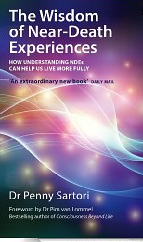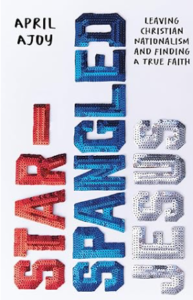 I received a complementary copy of this book for review purposes. The opinions are completely my own based on my experience.
I received a complementary copy of this book for review purposes. The opinions are completely my own based on my experience.
In her new book “The Wisdom of Near-Death Experience: How Understanding NDEs Can Help Us Live More Fully” Dr. Penny Sartori builds a convincing case that out-of-body, Near Death Experiences (NDEs) are very real. Drawing from her experience as a registered nurse caring for dying patients and from her own research, Sartori shares a number of captivating accounts of NDEs. “As long as one has not experienced an NDE themselves,” she writes, “it seems impossible to really understand the impact and the life-changing after-effects of this overwhelming experience.”
I like how Sartori includes NDEs from a variety of people. The young and the old. The religious and the agnostic. Those who had positive NDEs and some who didn’t. “I am not trying to prove or disprove an afterlife,” Sartori writes in the first few pages of the book, though most of the experiences do tell of consciousness after the body appears to have died. “What I have been trying to do is gain a greater understanding of the dying process so that care for dying patients can be enhanced,” she says. Her approach is scientific, and not to prove or disprove any particular world view of what happens to us after we die.
Sartori was initially a skeptic of NDEs. When a dying patient relays an experience of meeting her deceased mother in a beautiful meadow, Sartori thinks the woman “must have been hallucinating or had too much diamorphine. I never gave it a second thought and I didn’t question her further; I simply listened. It was a few years later … that I was to realize the significance of what she had said.”
That patient early in her nursing career had a NDE experience similar to what Sartori was to find from others. During a NDE, she writes, “most people are sent back by the deceased loved ones or ‘being of light’ that they meet. They are often told that it is not their time or that they still have work to do. Often the individual is left with a sense that there is a mission in their life they need to accomplish, though they do not know what that mission is.”
More than NDE stories, the book also touches on the doubts a person with a NDE encounters from friends and relatives. One woman looks back on her NDE as a child. She asks her grandmother about the beautiful lady she had met during her NDE. Sartori relates, “her grandmother told her not to ask such questions and from then on believed the young girl to be possessed and always reminded her of it.”
I have reviewed accounts of other authors’ near death experiences (Anita Moorjani and Eben Alexander). While moved by those first hand stories, I feel Sartori’s work is the best book I have read yet on the subject. “It’s time to acknowledge that NDEs are a very valid phenomenon and to treat people who have an NDE with the respect that they deserve,” the author concludes. Reading “The Wisdom of Near-Death Experiences” caused me to reconsider my views on death, and I suspect it will do the same for you, too.



